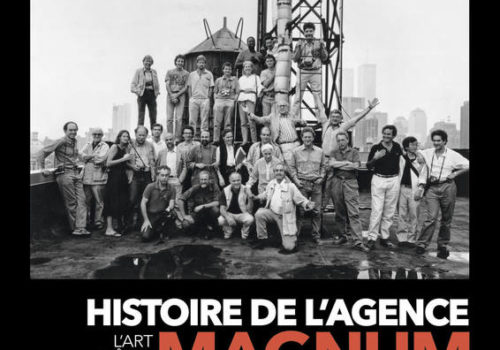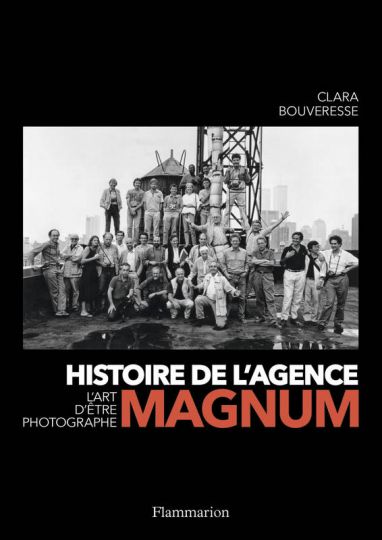The Magnum photos Agency, created in Paris and New York in 1947, is celebrating its seventieth anniversary this year. Clara Bouveresse’s book, Histoire de l’agence Magnum: L’Art d’être photographe, published by Flammarion, outlines the evolution of this famous cooperative. We present an exclusive selection of excerpts that show us the inner workings of the agency in three episodes.
Gallery sales of prints, exhibited mainly in Europe and the United States, represent today a major market for Magnum photographers. Diversifying activities, however, is nothing new… As Clara Bouveresse writes:
“The late 1960s saw the rise of [photography] exhibitions and print sales in New York. At Magnum, John G. Morris noted as early as 1958 that prints could be presented as ‘fine reproductions, just as paintings are sold.’ While exhibitions are not always lucrative, they raise the agency’s prestige and offer an opportunity to market prints. Magnum has also enjoyed the support of the Museum of Modern Art in New York (MoMA), which first purchased some fifty prints in 1961. The curator, Edward Steichen, had supported Magnum since the fifties. Starting in 1962, his successor, John Szarkowski, carried on the tradition. Magnum photographers were regularly exhibited in the museum. Notably, in 1965, the exhibition The Photo Essay, which spotlighted Magnum images, brought the photo essay to the forefront. John Szarkowski emphasized the photographer’s sensibility and the individual image, borrowing the Renaissance criteria of artistic recognition (the notions of masterpiece, originality) in order to ennoble a journalistic genre.
Three years after the exhibition at MoMA, the year 1968 saw the sales of Magnum prints soar, coupled with a proliferation of solo exhibitions in the United States. Among others, Henri Cartier-Bresson was being widely exhibited and recognized, so much so that he came to be known for pleading for ‘assignments, not diplomas’. That same year, MoMA held an exhibition of his work, Recent Photographs, organized by John Szarkowski. According to the New York Times art critic Hilton Kramer, this exhibition successfully proved the superiority of master photographers, and of Henri Cartier-Bresson in particular, as an embodiment of masterful ‘classicism.’ A staunch defender of the nobility of art in an age rife with mixed popular culture works, Kramer approved of the photographer’s moral finesse. He did his best to show the relationship between [Cartier-Bresson’s] work and Cubism, more broadly evoking a French tradition of ‘compositional rigor.’
Still in 1968, Danny Lyon, a photographer affiliated with Magnum, had an exhibition radically opposed to that ‘classical’ approach. He had conducted a documentary investigation into Lower Manhattan before its destruction, methodically photographing the interiors and the facades of buildings slated for demolition. He collected information and gathered residents’ testimonies. On this occasion, the exhibition was not worthy of the Art section of the New York Times. Instead, it was relegated to a photography column whose editor praised the ‘historian’s’ work carried out by the photographer.
In the end, even the latest news images would find their way into exhibitions. The Fonds pour la photographie engagée, headed by Cornell Capa, featured photos of the Russian invasion of Czechoslovakia of August 21, 1968. The aim was to showcase ‘on walls and in greater depth, with the graphic quality, integrity and direct authenticity of the original picture rather than a reproduction.’
Faced with the sluggish market of the American press, photographers in New York started to turn to galleries and museums. What made a good picture was no longer its narrative quality but the subjective gaze of the photographer – an eye all the more subjective that the universal humanism of the early days of the agency came under criticism.”
Histoire de l’agence Magnum: L’art d’être photographe
Published by Flammarion
€35

















